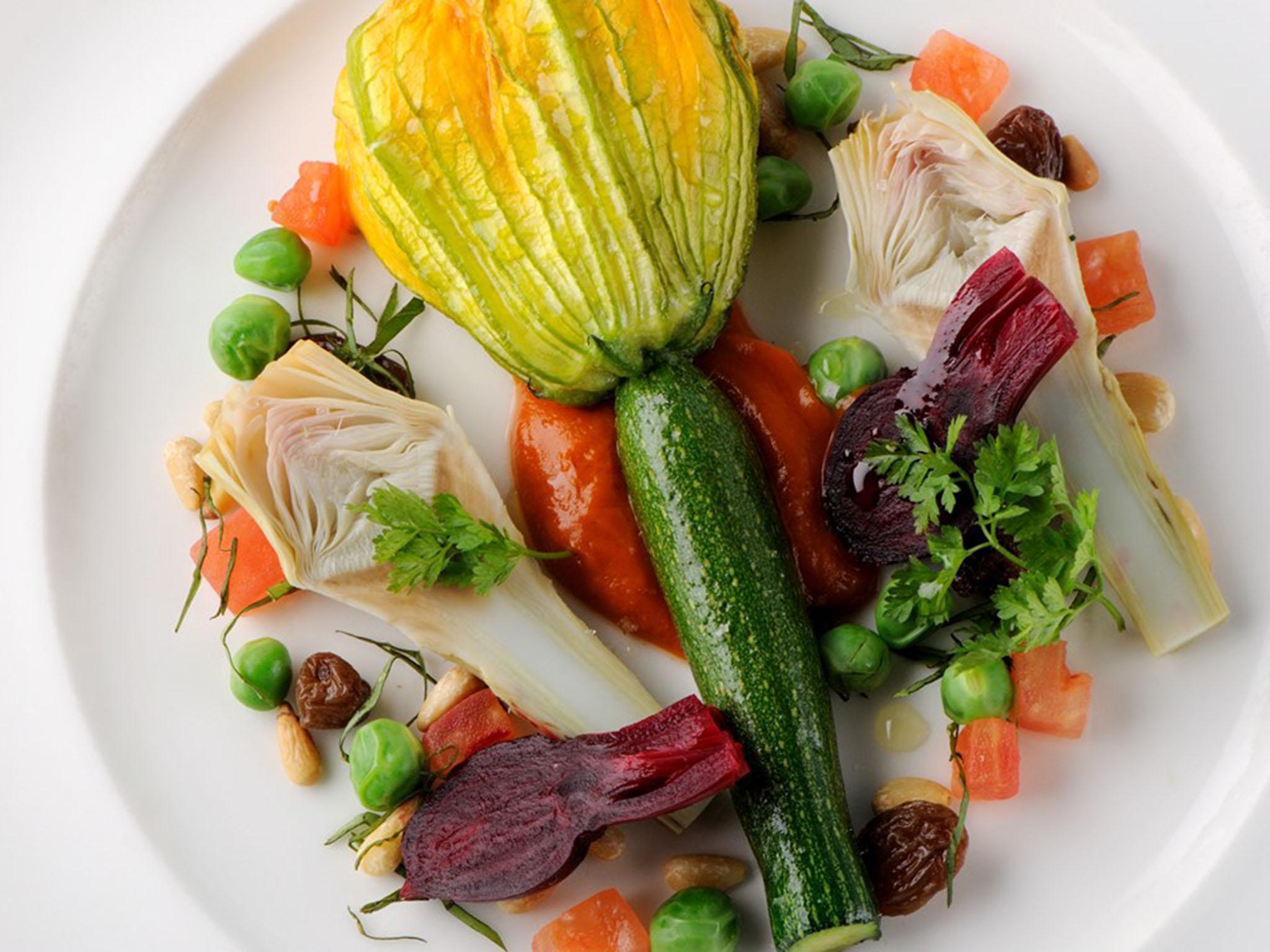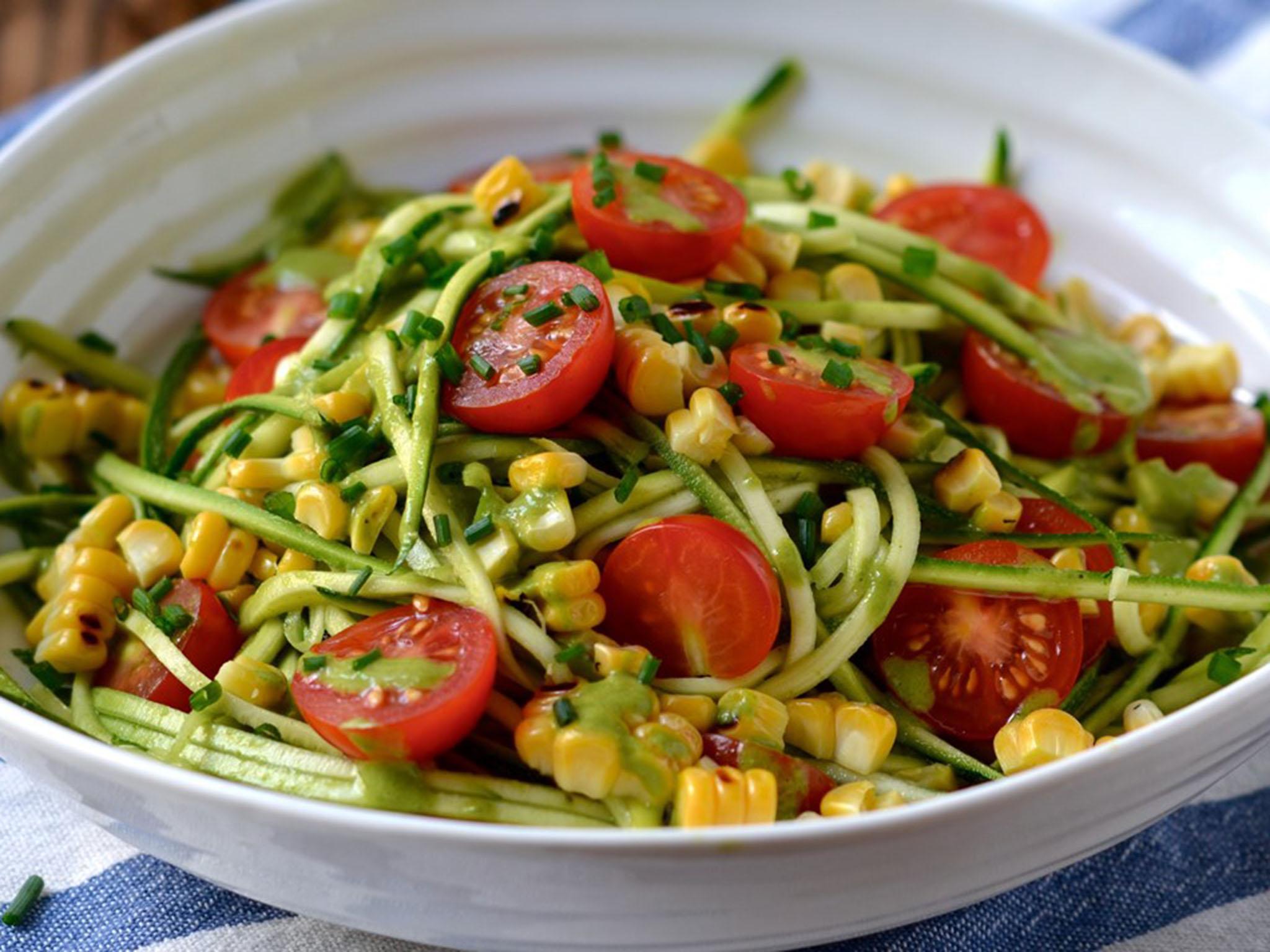How to cook with courgettes
Available all year round, but best during the summer, this versatile and delicately flavoured vegetable is far from boring – and the possibilities are (almost) endless

Your support helps us to tell the story
From reproductive rights to climate change to Big Tech, The Independent is on the ground when the story is developing. Whether it's investigating the financials of Elon Musk's pro-Trump PAC or producing our latest documentary, 'The A Word', which shines a light on the American women fighting for reproductive rights, we know how important it is to parse out the facts from the messaging.
At such a critical moment in US history, we need reporters on the ground. Your donation allows us to keep sending journalists to speak to both sides of the story.
The Independent is trusted by Americans across the entire political spectrum. And unlike many other quality news outlets, we choose not to lock Americans out of our reporting and analysis with paywalls. We believe quality journalism should be available to everyone, paid for by those who can afford it.
Your support makes all the difference.Courgette (or zucchini as it is known in the US and Italy) is in season in the UK between June and September. Part of the squash family, courgettes descended originally from the Americas, but the type of courgettes that we are now familiar with were developed in Italy in the 1800s. The word zucchini comes from Italian, however, the word we Brits use, courgette, stems from the French word for squash, courge.
Dark green courgettes are the most familiar, but look out for white or yellow varieties to liven up dishes, or hunt down the flavourful trompette courgette, which is long and winding with a bulbous end – much like the musical instrument it is named after. A fully grown courgette is known as a marrow in the UK and can be up to a metre in length.
Courgettes are very easy to grow and, during the summer months, people tend to become overrun with them, but, there are so many ways to eat the summer squash that you should never get bored. Fortunately, they are low in calories and high in vitamins A and C, so they really are good for you too.
When buying courgettes, look for firm, shiny and unblemished fruits that feel heavier than they look when picked up. If they feel spongy this means they are past their best, so should be avoided. Courgettes will keep happily in the fridge for two to three days; any more than this and they will start to lose their flavour and become bitter.
Courgette is one of the few vegetables that doesn’t require peeling before eating – just top and tail them, give them a quick wash in cold water and they are ready to use. Courgettes can be eaten raw or cooked; slice thinly and dress with a little salt and olive oil for a great addition to salads or you could try making courgette spaghetti with a spiralizer. “Courgetti”, as it is now known, is even available in supermarkets ready-made, but making your own is much fresher and will have a better flavour. Try the courgetti recipe below, made with piccolo tomatoes, grilled corn and a herb dressing, for a simple midweek supper.
When cooking courgette, it is best to do so quickly. Grilling, barbecuing and frying are fast and easy ways to cook the summer squash. Avoid boiling or steaming as the courgette will soak up water and become mushy and unpleasant. You could, however, try adding courgettes to a soup – they work well in minestrone, added right at the end to keep a little crunch.
The most popular way to cook courgettes is probably by frying or stir frying. Diced courgette takes literally minutes to fry and it is a main component of the French provençal dish ratatouille.
What goes with courgette?
Courgette’s best friend must be cheese: Parmesan, feta, and ricotta, and many more, all go hand-in-hand with this summer vegetable. Add it to pasta with Parmesan, pair courgette moussaka with Gruyère and lamb rump, or try adding slices of courgette to a tasty pizza.
Courgettes can also be used to make fritters when grated up and mixed with flour and eggs. They are also often used in breads and cakes to add moisture because of their high water content.

Stuffed courgette flowers by Dominic Chapman
Stuffed courgette flowers
2 courgette flowers
2 tbsp courgette, finely diced
30g pine nuts
40g sultanas
500g buffalo ricotta
20g fresh basil, roughly chopped
1 lemon, juiced
salt
pepper
Vinaigrette
2 tbsp Dijon mustard
2 tbsp white wine vinegar
65ml vegetable oil
65ml olive oil
salt
pepper
Garnish
1 tbsp salt
2g sultanas
2g pine nuts
2g fresh peas
1 tbsp tomato purée
1 baby artichoke
2 tbsp sherry vinegar
5 baby beetroots
1 tomato, diced
5g fresh basil
5g fresh chervil
½ lemon, juice
olive oil
Start by toasting the pine nuts for the courgette flowers. Place the pine nuts in a dry, hot pan and heat until they start to pop. Remove from the heat and set aside. Place the sultanas in a pan and cover with water. Bring to the boil and then turn off the heat. Leave the sultanas to soak in the pan for 10 minutes before straining.
Combine the diced courgette and ricotta in a bowl and then add the soaked sultanas and pine nuts. Add the basil and squeeze lemon juice into the bowl to taste. Season to taste. To prepare the courgette flowers, gently remove the stamen from inside and cut the tip off the opposite end. Scoop the mixture into a piping bag and then pipe into both of the courgette flowers. Set aside.
For the vinaigrette, combine the mustard, salt and pepper in a bowl. Gradually whisk in the oils in a slow, steady stream until emulsified. Adjust seasoning again and if not sweet enough balance with sugar. Dress the diced tomato, sultanas, pine nuts, peas in the vinaigrette. In a separate bowl, combine the sherry vinegar and tomato purée. Season with salt and pepper and set aside. Clean and prepare the baby artichoke. Place in a pan and cover with water, add the lemon juice, and salt. Slowly bring to the boil for 3 minutes, remove from the heat and allow to cool in the liquid before cutting into quarters.
Add a little oil to a frying pan placed over a medium-high heat. Add the sliced artichokes into the pan and fry until golden brown all over. Bring a pot of water to the boil. For the baby beetroot, clean off the stems leaving 1cm for presentation purposes. Blanch the beetroots. Allow to cool slightly before carefully peeling with a small knife and cutting into quarters.
Dress the beetroots and artichokes in the vinaigrette. Place the courgette flowers in an oven set to 200°C/gas mark 5 and cook for 6 minutes or until the courgette flowers are starting to soften. To serve, spoon the tomato purée across the centre of both plates and lay the courgette flowers on top. Garnish with the dressed beetroots, diced tomato, artichoke, peas, sultanas, pine nuts and some fresh basil and chervil.

Courgetti with Piccolo tomatoes, grilled corn and herb dressing by Emma Potts
Courgetti salad
150g piccolo tomatoes, halved
3 courgettes, medium
1 ear of corn, husks and fibres removed
½ tsp coconut oil, or grapeseed oil
Dressing
parsley, 1 small handful
chopped chives, 1 small handful, plus extra to garnish
3 tbsp olive oil
2 tbsp lemon juice
water, 1-2 tbsp
¼ tsp salt
1 tsp maple syrup, or honey
black pepper, to taste
Preheat a griddle pan until hot (or, alternatively, use a barbecue) and brush the corn with the oil. Place onto the hot grill and rotate every couple of minutes until cooked through with a few charred bits. Leave to cool slightly before cutting the kernels from the cob.
Meanwhile, turn your courgettes into courgetti using a spiralizer or julienne peeler. Discard the seedy middle. Blend all of the dressing ingredients in a small blender or food processor until smooth. Taste and adjust if necessary.
In a large bowl, dress the courgetti with as much of the dressing as desired (you might not need all of it). Add the halved tomatoes and corn then toss to combine.
Guide and recipes from Great British Chefs. Visit their site for more delicious courgette recipes
Join our commenting forum
Join thought-provoking conversations, follow other Independent readers and see their replies
Comments